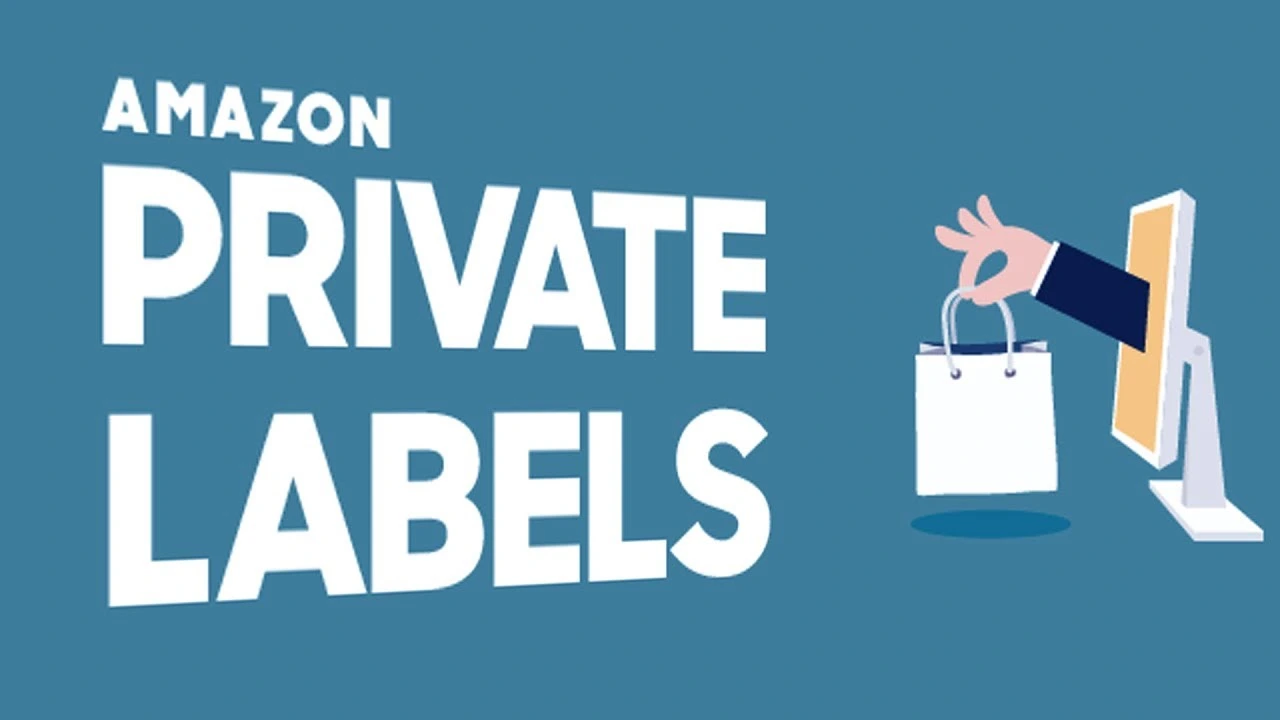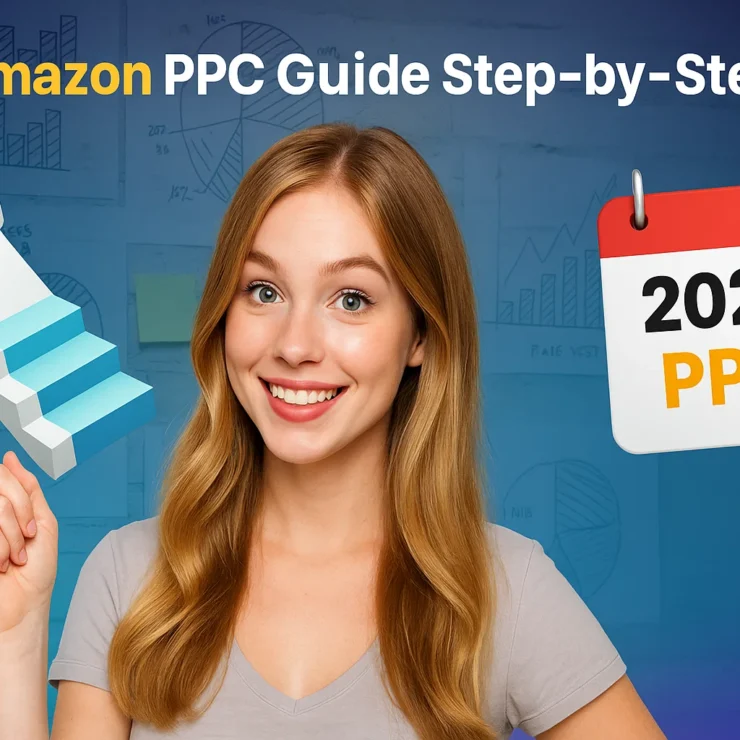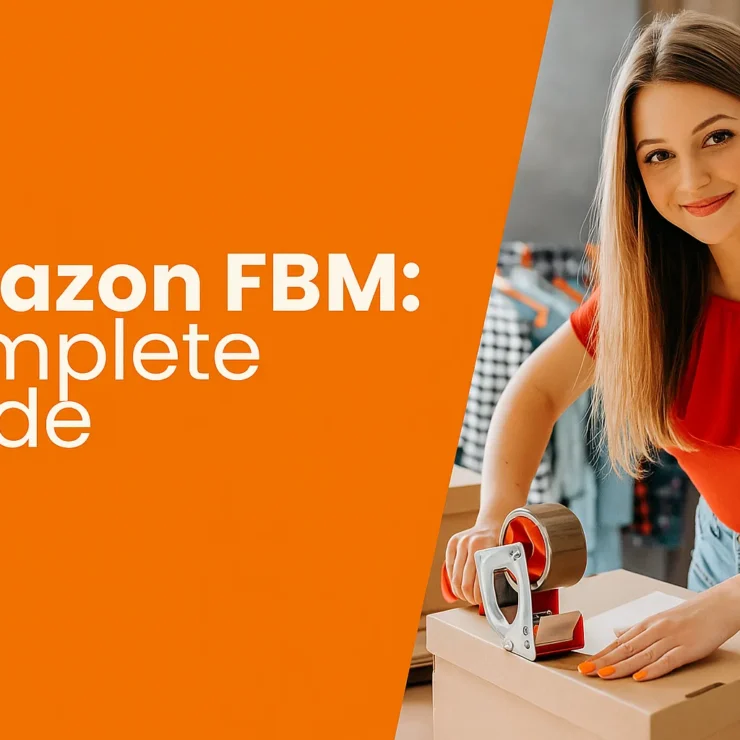In 2025, Amazon remains the world’s leading eCommerce platform—and one of the most profitable places to build a private label business. If you’ve ever dreamed of selling your own branded products without manufacturing or holding inventory yourself, Amazon private label is your golden opportunity. This model allows you to source generic products, brand them as your own, and sell through Amazon FBA (Fulfillment by Amazon), leveraging their massive customer base and logistics network.
But while the opportunity is big, so is the competition. To succeed, sellers need a clear understanding of the Amazon private label strategy, from product research and compliance to branding and marketing. In this guide, you’ll learn how to sell private label on Amazon, the requirements you need to meet, and strategies to scale successfully.
Let’s dive into what it takes to launch and grow your private label brand on Amazon in 2025.
What are Amazon Private Label Products?
Amazon private label products are goods manufactured by a third party but sold under your own brand name on Amazon. Instead of reselling someone else’s brand, you take control of the branding, packaging, and marketing, allowing you to create a unique presence in the marketplace. You don’t need to invent a new product—just improve, differentiate, or rebrand an existing one to make it your own.
For example, a fitness seller might source a generic resistance band from a manufacturer in China and sell it under their brand, with custom packaging, inserts, and a unique product listing on Amazon. Once the product is listed, Amazon FBA handles the storage, shipping, and customer service.
This business model is different from:
Wholesale, where you resell existing branded products.
Dropshipping, where products ship directly from the supplier with no inventory ownership.
Private labeling gives you more control over pricing, quality, marketing, and most importantly—customer loyalty. As your brand gains recognition, you can expand your product line or even sell your brand as a valuable business asset.
With Amazon’s massive reach and FBA infrastructure, private label sellers can scale quickly, reach global markets, and generate passive income. It’s no wonder that private label is considered one of the most popular and profitable ways to build a brand on Amazon.
Why Sell Private Label Products on Amazon?
Launching a private label brand on Amazon offers unique advantages that can transform a side hustle into a scalable eCommerce business. Compared to wholesale or dropshipping, selling private label products on Amazon provides more control, better profit margins, and long-term brand value. Here’s why more entrepreneurs are choosing this model in 2025:
1. Brand Ownership & Market Differentiation
With private label, you build and own your brand identity. From packaging and product design to marketing and messaging—you call the shots. This not only increases credibility but builds long-term customer loyalty, something that’s rare in generic or reseller models.
2. Higher Profit Margins
By sourcing directly from manufacturers (often via platforms like Alibaba), you cut out middlemen. The result? Higher profit margins and more pricing flexibility. You can also negotiate better terms, control production costs, and reinvest profits into scaling the business.
3. Customize Your Product
Customization is key to standing out. With private labeling, you can tweak product features, materials, packaging, and even bundle items together. This allows you to offer something unique that solves a specific customer need, giving you a competitive edge and reducing the risk of being undercut by copycats.
4. No Competing for the Buy Box
Unlike wholesale or arbitrage sellers, private label sellers own the product listing. That means you don’t have to compete with other sellers for the Buy Box. You control the price, content, and inventory, which makes sales more consistent and easier to forecast.
5. Scalability Through FBA
Fulfillment by Amazon (FBA) takes care of logistics, shipping, returns, and customer service. This allows you to focus on growth activities like product development and marketing. Whether you sell 100 or 10,000 units per month, the infrastructure scales with you.
What Are the Requirements for Amazon Private Labeling?
Before you launch your first Amazon private label product, it’s essential to understand the key requirements involved. Amazon has specific policies and standards that sellers must meet to ensure quality, compliance, and smooth operations. Here’s a breakdown of what you need to get started:
Professional Seller Account
You must register for a Professional Amazon Seller Account. This gives you access to tools like Amazon Brand Registry, bulk listing features, and advanced advertising options essential for growing a private label brand.
Product Research & Market Validation
Finding the right product is step one. Use tools like Helium 10, Jungle Scout, or AMZScout to:
Analyze search volume and demand
Study competitors and price points
Identify low-competition niches with high potential
Your product should solve a problem or offer value beyond what’s currently available.
Brand Name & Logo
To sell private label, you need a unique brand name and a professionally designed logo. Your brand should reflect your product category, values, and resonate with your target audience.
Reliable Manufacturer
You’ll need to partner with a manufacturer—often sourced from Alibaba or a sourcing agent. Ensure they allow customization, can meet Amazon’s quality standards, and deliver consistent supply.
FNSKU Barcode & Product Labeling
Amazon requires every product to have an FNSKU barcode (Fulfillment Network Stock Keeping Unit), which identifies your product as unique to your seller account. You or your manufacturer must label the products accordingly before they reach Amazon’s fulfillment centers.
Packaging Compliance
Products must be packaged securely and meet Amazon’s packaging and prep requirements. If you’re selling in a regulated category (e.g., food, supplements, electronics), ensure your packaging meets safety and legal standards.
Product Listings
Optimize your product listing for SEO and conversions:
Use relevant keywords in your title and bullet points
Write a clear, benefit-driven product description
Include high-resolution images and videos
Utilize A+ Content (if enrolled in Brand Registry)
A compelling listing is critical to turning traffic into sales.
Marketing & Promotion Strategy
You’ll need an initial launch strategy, including:
Amazon Sponsored Ads (PPC)
External traffic (social media, email, influencers)
Discounts or coupons to boost early conversions and reviews
Plan to invest in your first 60–90 days of marketing for traction.
Fulfillment Method
Most private label sellers choose Fulfillment by Amazon (FBA) because it handles storage, shipping, and customer service. Alternatively, you can use FBM (Fulfilled by Merchant) or a 3PL provider, but it’s more complex.
Inventory Management System
Use inventory software (like SoStocked, InventoryLab, or Amazon’s native tools) to:
Track stock levels
Predict reorders
Avoid stockouts or overstocking
Effective inventory planning ensures uninterrupted sales and better IPI scores (Inventory Performance Index).
How to Sell Private Label Products on Amazon
Do Product Research
Product research is the foundation of your Amazon private label success. Your goal is to identify a product with:
High demand
Low to moderate competition
Room for improvement or differentiation
Strong profit margins
Tools to Use:
Jungle Scout, Helium 10, or AMZScout for keyword trends and sales estimates
Google Trends for seasonal interest
Amazon Best Sellers for market validation
Pro Tips:
Look for products that are lightweight, under $50, and not dominated by big brands.
Avoid electronics, patented items, and highly regulated categories unless you have experience.
Find a Supplier
Once your product is selected, the next step is to source it from a manufacturer. Use platforms like:
Alibaba (China-based suppliers)
ThomasNet (U.S. suppliers)
How to Vet Suppliers:
Compare pricing and MOQs (Minimum Order Quantities)
Ask for samples before placing bulk orders
Check for certifications and production capabilities
Negotiate customization options like improved materials, better packaging, or a unique feature to differentiate your listing.
Select Your Brand’s Logo, Product Design, and Packaging
Your brand identity should resonate with your target customers and stand out in a crowded marketplace.
Logo: Hire a professional designer for a clean, memorable brand mark.
Packaging: Create visually appealing and eco-conscious packaging. This adds perceived value and supports unboxing experiences.
Product Design: If possible, adjust design elements (color, ergonomics, add-ons) to solve common user complaints.
This step is also essential for building brand loyalty and becoming eligible for Amazon Brand Registry.
Step 4: Create Your Amazon Listing
A compelling and SEO-optimized product listing helps convert traffic into buyers.
What to Include:
Product Title: Use your primary keyword naturally.
Bullet Points: Highlight features and benefits. Be clear, concise, and persuasive.
Product Description: Use A+ Content (if registered) for branded storytelling and comparison charts.
Images & Videos: Include lifestyle photos, infographics, and usage demonstrations.
Backend Keywords: Add hidden keywords in the listing to help with organic ranking.
Tools like Helium 10’s Scribbles can help optimize your listing for both Amazon SEO and buyer psychology.
Choose a Pricing Strategy
Choosing the right price point is critical at launch and beyond. You want to balance competitive pricing with profitability.
Strategies to Consider:
Penetration Pricing: Start slightly lower than competitors to build traction and gather reviews.
Value-Based Pricing: Price based on perceived value if your product is differentiated.
Psychological Pricing: $24.99 often converts better than $25.
Monitor your competitors regularly and be prepared to adjust based on your ad spend, profit margins, and sales velocity.
Select Fulfillment Method
Most private label sellers use Fulfillment by Amazon (FBA) for its Prime benefits and hands-off logistics.
Why FBA?
Fast Prime shipping
Amazon handles returns and customer service
Boosts your visibility in search results
Alternative: You can also use FBM (Fulfilled by Merchant) or a third-party logistics (3PL) provider if you want more control over storage and shipping.
Just ensure your inventory is tracked accurately to avoid stockouts or delays.
Launch Your Product
Launching is where many sellers fail or thrive. You need a launch plan that drives traffic and builds social proof early.
Launch Checklist:
Use Amazon Sponsored Product Ads (PPC) from day one.
Offer limited-time discounts or coupons to encourage conversions.
Enroll in Amazon Vine (if eligible) for authentic early reviews.
Promote on social media or run influencer micro-campaigns.
Direct traffic from your email list, blog, or external sources like Pinterest or YouTube.
Pro Tip: Monitor your ad spend vs. sales daily in the first few weeks. Fine-tune keywords and bids accordingly.
Examples of Private Label Products
1. Amazon Basics Batteries
Category: Electronics & Everyday Essentials
Overview: Launched in 2009, AmazonBasics is Amazon’s flagship private label brand, offering a wide range of affordable, everyday items, including batteries. These products are manufactured by third-party suppliers and rebranded under AmazonBasics. For instance, some AmazonBasics batteries are produced in Indonesia using Japanese technology.
2. Anker Electronics Accessories
Category: Tech & Gadgets
Overview: Founded in 2011 by Steven Yang, Anker began as a private label brand on Amazon, specializing in electronic accessories like chargers and power banks. The brand has since expanded its product line and established a strong reputation for quality and affordability.
3. Coofandy Men’s Blazer
Category: Fashion
Overview: Established in 2015, Coofandy is a men’s fashion brand that offers a range of clothing, including blazers, suits, and casual wear. Their products are designed to balance style, comfort, and practicality, making them popular among Amazon shoppers.
4. Flexzilla Garden Hose
Category: Home & Garden
Overview: Flexzilla is a brand of garden hoses and related equipment manufactured by Legacy Manufacturing Company, based in Marion, Iowa. Known for their durability and flexibility, Flexzilla hoses are a popular choice among consumers and are widely available on Amazon.
Conclusion
Amazon private labeling in 2025 remains one of the most profitable business models for ecommerce entrepreneurs. With the ability to control your brand, pricing, and product design, selling private label products on Amazon gives you a competitive edge in a crowded marketplace. From researching in-demand products to launching your own brand and leveraging FBA, private labeling offers scalability, higher margins, and long-term customer loyalty. However, it does require due diligence — including compliance with Amazon’s requirements, strategic marketing, and inventory management.
Whether you’re just starting or scaling your current store, private labeling is a strategic move that can build a sustainable business on Amazon.
FAQ's
What is a private label product on Amazon?
A private label product is manufactured by a third party but sold under your brand name exclusively on Amazon or elsewhere.
How much does it cost to start an Amazon private label business?
Startup costs can range from $2,500–$5,000+, depending on product choice, supplier, and marketing needs.
Can I use Fulfillment by Amazon (FBA) for private label products?
Yes, FBA is highly recommended for private label sellers as it handles storage, shipping, and customer service.
Can You Private Label Alibaba Products on Amazon?
Yes, you can private label products from Alibaba and sell them on Amazon. Many sellers source generic products from Alibaba, customize them with their brand name, logo, and packaging, and then list them as private label products on Amazon. Just ensure the product complies with Amazon’s policies and U.S. regulations.
Do You Need Permission From the Manufacturer to Private Label?
Yes, you typically need permission from the manufacturer to private label a product. Some manufacturers may allow you to brand their products, while others may have restrictions. It’s essential to establish a clear agreement to ensure that you’re legally allowed to use their product design, logo, and branding for your private label. Always get this in writing to avoid any future conflicts.
Contact Us for Tailored Solutions – Stores Automation
Ready to transform your Amazon store and achieve big wins. Sign Up at Stores Automation for personalized solutions that leverage the power of automation for your business. Reach out to us at 302-204-8244 or via email at info@storesautomation.com. For more information, visit our Contact Us page. Embark on the path to e-commerce success with Stores Automation – where small changes lead to big wins!





